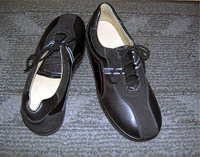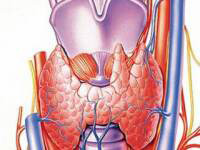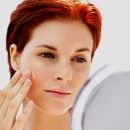Sugar diabetes is a common endocrine disease. Violation of the blood supply to the lower limbs does not rarely lead to the development of the diabetic foot. Daily observance of simple recommendations will slow down the development of pathological changes.
Content
Diabetic Stop with Diabetes
Sugar diabetes - severe disease affecting the whole organism. Two types of diabetes are distinguished, among which the most commonly found 2 type occurring in adults and associated with insulted insulin hormone production in the pancreas. The decrease in insulin leads to the fact that glucose needed to power all organism cells does not enter them, and dissolves in the blood. That is why in blood analysis, the content of glucose (sugar) increases. Changing the content of glucose impairs all organs, and, in particular, nerves and vessels.
Violation of nerves is called neuropathy. Often such a violation is manifested by numbness of the foot or does not bother at all, as it leads to a decrease in skin sensitivity. If you touch the sole or the fingers of the foot with a pencil, then the feeling will be barely noticeable and fuzzy. Therefore, any inconvenience of shoes or a small foreign object that has fallen under the foot may remain imperceptible and lead to significant failure.
Violation of blood circulation in small leg vessels leads to a decrease in oxygen flow to muscles, skin, bones. This is manifested by convulsions or pain in the calf muscles, edema in the field of leg and foot, dry skin. But the most dangerous is the poor healing of any abrasion, scratches or skin wear, resulting in a long non-healing wound for a long time, which is called a trophic ulcer.
The long-term course of diabetes leads to a violation of the structure of the bones, and then the foot joints that begin to frighten, the stop becomes flat, deformations appear, which are called «Stop Shakot».
Useful recommendations for diabetes
Every day it is worth looking at the legs in order to detect blisters, cuts, scratches and other damage through which the infection can penetrate. We must not forget to inspect the gaps between the fingers. Stop soles can be easily viewed using a mirror.
Daily washing of feet and careful wiping with a towel without rubbing is the prevention of the development of fungal diseases. Do not forget about washing and thorough drying of interfallated intervals.
Before lowering the legs in the pelvis with water, it is necessary to check its temperature. Since the sensitivity of the legs is broken, you can not feel that the water in the pelvis turned out to be too hot.
Trying to remove corn, in no case can you use a razor, sharp scissors and in general something sharp. Excessive horny layer and corns are allowed to rub non-volatile pima. Do not try to consider all rough skin at once. Daily and gradually remove hyperkeratosis, you can safely achieve large results.
It is very important to change socks or stockings every day. Wearing only suitable stockings or socks. You can not wear a shelter socks or socks with tight rubber band. If the legs are flawed at night, not before bedtime it is better to wear warm socks.
 It is strictly forbidden to wear shoes on a barefoot, wearing sandals or sandals with a strap that runs between your fingers, walk barefoot and, moreover, hot surface.
It is strictly forbidden to wear shoes on a barefoot, wearing sandals or sandals with a strap that runs between your fingers, walk barefoot and, moreover, hot surface.
Do not use therapeutic or preventive insoles, not intended for patients with diabetes mellitus. Their profile may not match the foot and lead to the formation of bedding.
With dry skin of the legs, it is necessary to lubricate them (but not interfalic gaps) with low-fat cream. In case of injuries - iodine, «Manganese», Alcohol I «Zelenk» contraindicated due to a bubble action. Absadins, cuts and t.NS. It is best to treat hydrogen peroxide (3% solution) or special means (dioxidine, furacilin) and impose a sterile bandage. After which it will turn to a specialist as soon as possible.









